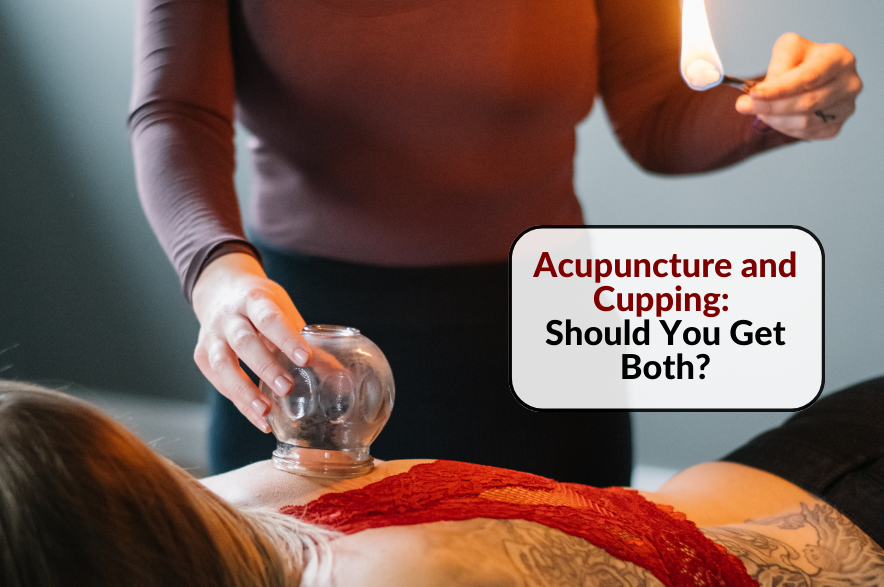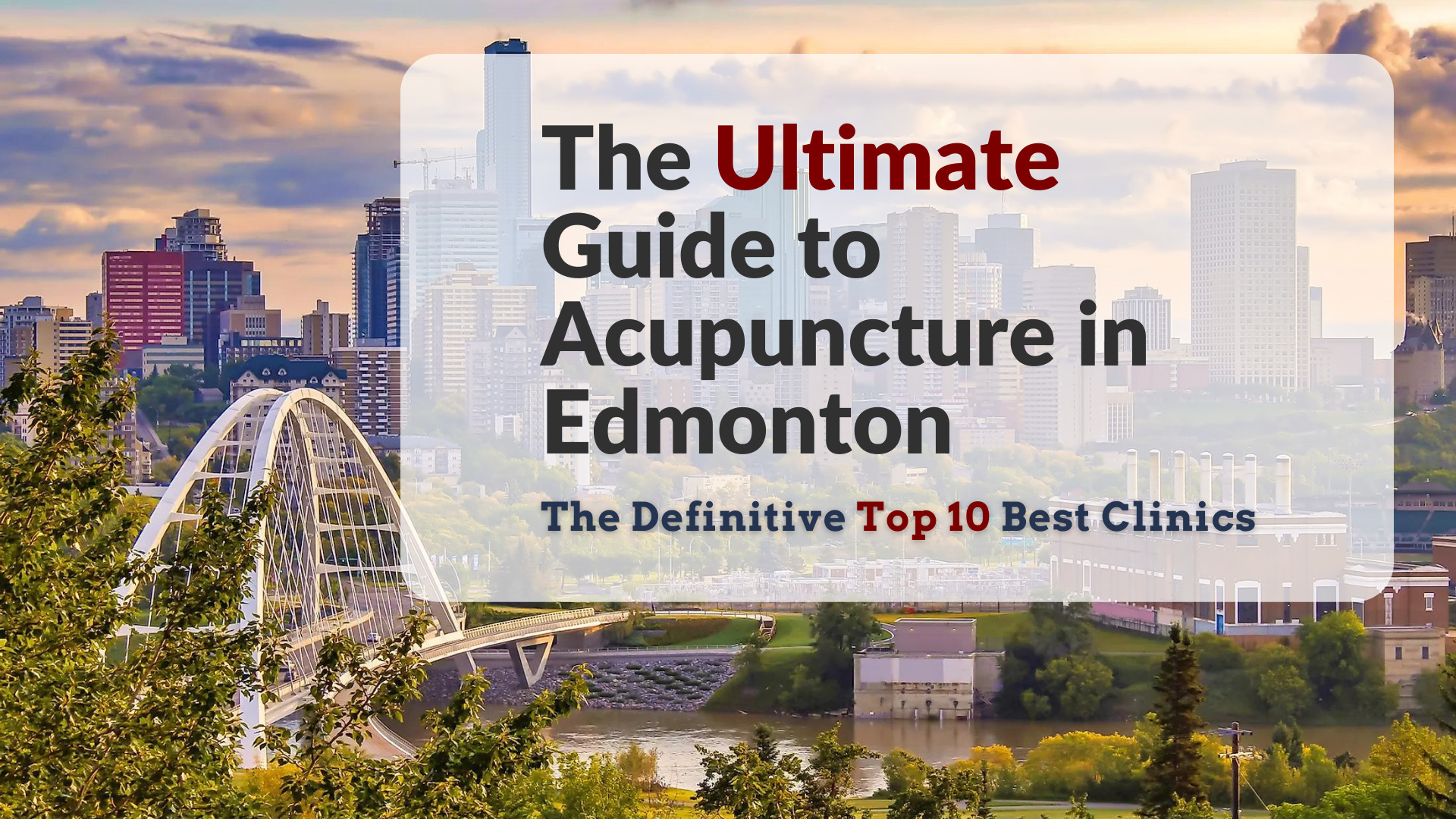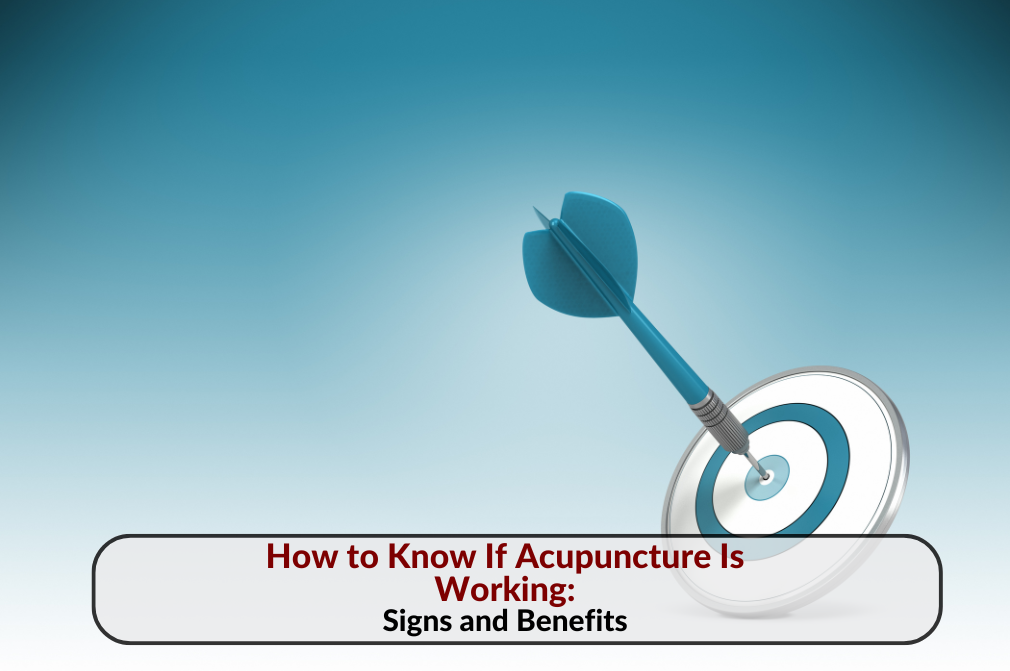Acupuncture and Cupping: Should You Get Both?
Acupuncture and Cupping: Should You Get Both?
Did you know that acupuncture has been practised for over 2,500 years and that cupping therapy dates back to ancient Egyptian and Chinese cultures as early as 1,550 B.C.? These two time-honoured treatments have stood the test of time and are still widely used today to promote health and well-being. But what makes these therapies so enduring, and should you consider integrating both into your wellness routine?
In this blog post, we’ll discuss acupuncture and cupping—exploring their origins, benefits, and how they work together to create a powerful healing experience. We’ll also address common concerns like the perceived dangers of cupping, “cupping therapy gone wrong” fears, and the possible disadvantages of acupuncture. Whether you’re new to these therapies or seeking to deepen your understanding, this post will provide valuable insights into acupuncture and cupping.
What Is Acupuncture and Cupping?
To fully appreciate the benefits of acupuncture and cupping, it’s important to understand the fundamentals of each therapy. Both practices are deeply rooted in Traditional Chinese Medicine (TCM) and are used to balance the body’s energy, promote healing, and address a wide range of health issues. Let’s explore how each therapy works and why they complement each other so effectively.
What Is Acupuncture?
Acupuncture involves the insertion of thin, sterile acupuncture needles into specific points on the body to stimulate energy flow, or Qi (pronounced ‘chee’). This ancient Chinese practice is widely used to treat various physical, mental, and emotional conditions. From chronic pain to anxiety, acupuncture offers a natural and effective way to restore balance in the body.
What Is Cupping?
Cupping, also rooted in Traditional Chinese Medicine (TCM), is a technique that involves placing cupping cups on the skin to create suction. This suction cup treatment is believed to enhance blood circulation, promote lymphatic drainage, and release toxins from the body.
Chinese cupping can be performed with different types of cups, including glass, silicone, and bamboo. The cupping treatment is often combined with acupuncture to provide a comprehensive healing experience.

How Does Cupping Work?
Cupping therapy works by creating negative pressure inside the cups, which lifts the skin and underlying tissues. This action increases blood flow to the area, promoting healing and relaxation. The process may leave temporary cupping marks or bruising cupping, which are often painless and indicate the release of toxins and stagnant blood.
The Benefits of Acupuncture and Cupping
The combination of acupuncture and cupping offers a holistic approach to health that targets both specific ailments and overall well-being. By working together, these therapies can address a wide range of physical and emotional issues, providing comprehensive care that goes beyond symptom relief.
Acupuncture and Cupping Treatment: A Powerful Combination
When combined, acupuncture and cupping offer a synergistic effect that enhances the benefits of each therapy. Acupuncture needles target specific points to stimulate Qi flow, while cupping focuses on larger areas, pulling blood and energy to the surface. This combination is particularly effective for treating musculoskeletal pain, stress, and chronic conditions.
Massage and Cupping: Enhancing Relaxation
Massage and cupping can be used together to provide a deeper, more therapeutic experience. The cupping massage benefits include loosening tight muscles, improving circulation, and promoting relaxation. Unlike traditional massage, cupping reaches deeper tissues, making it a highly effective treatment for chronic muscle tension.
What Does Cupping Therapy Do?
The primary benefits of cupping therapy include:
- Relaxing muscles: The vacuum pressure created by the cups helps relax tight muscles and fascia.
- Promoting circulation: Cupping increases blood flow to the affected areas, which is crucial for healing and tissue repair.
- Detoxifying the body: By drawing out toxins through the skin, cupping supports the body’s natural detoxification processes.
- Reducing stress: The calming effect of cupping on the nervous system can lower cortisol levels, helping to alleviate stress and anxiety.
Cupping Points and Techniques
Cupping can be applied to various cupping points on the body, depending on the condition being treated. Common areas include the back, neck, and shoulders. Techniques like wet cupping (involving controlled bleeding) and dry cupping (without bleeding) are used based on individual needs.
Myofascial Cupping Therapy
Myofascial cupping therapy is a specialised technique that targets the fascia, the connective tissue that surrounds muscles. This therapy is particularly effective for athletes and individuals with chronic pain, as it helps release tension and improve flexibility.
Common Concerns and Misconceptions
Despite the many benefits of acupuncture and cupping, there are some common concerns and misconceptions that patients may have. Understanding these issues can help you make informed decisions about your health and ensure that you receive the best possible care.
Dangers of Cupping and Acupuncture
While both acupuncture and cupping are generally safe, it’s essential to receive treatment from qualified practitioners. Concerns like cupping therapy gone wrong or the dangers of cupping usually arise when performed by untrained individuals. At Red Leaf Wellness, our team of licensed professionals ensures that all treatments are administered safely and effectively.
Cupping Treatment Side Effects
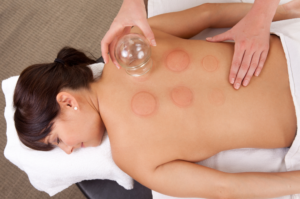
Common cupping treatment side effects include temporary cupping marks or bruises from cupping therapy. These marks are not harmful and typically fade within a few days.
How long do cupping marks last? The duration varies depending on the individual, but they usually disappear within a week.
Acupuncture Pros and Cons
While acupuncture offers numerous benefits, it’s important to be aware of the potential disadvantages of acupuncture. Some individuals may experience mild side effects, such as soreness at the needle sites or slight bleeding. However, these are generally rare and short-lived.
Does Cupping Work?
You might wonder, “does cupping work?” The answer is yes, for many people. Cupping has been shown to be effective in treating a variety of conditions, from muscle pain to respiratory issues. The key is to receive treatment from experienced practitioners who can tailor the therapy to your specific needs.
How to Prepare for Acupuncture and Cupping
Proper preparation is key to maximizing the benefits of acupuncture and cupping. By taking the right steps before and after your session, you can enhance the effectiveness of these therapies and ensure a more comfortable experience.
Before and After Cupping Therapy
To get the most out of your acupuncture and cupping sessions, it’s important to prepare properly. Before and after cupping therapy, ensure you are well-hydrated and have eaten a light meal. Avoid caffeine and alcohol, and wear loose, comfortable clothing. Post-treatment care includes staying warm, resting, and continuing to hydrate.
Cupping Treatment at Home: Is It Safe?
While it’s possible to perform cupping therapy at home using a cupping therapy machine or massage cups, we strongly recommend seeking professional guidance. Incorrect application can lead to the “cupping therapy gone wrong” scenario and may not provide the desired benefits.
Cupping and Acupuncture for Specific Conditions
Both acupuncture and cupping are versatile therapies that can be tailored to address specific health concerns. Whether you’re dealing with chronic pain, stress, or other conditions, these treatments offer targeted relief and support for your overall well-being.
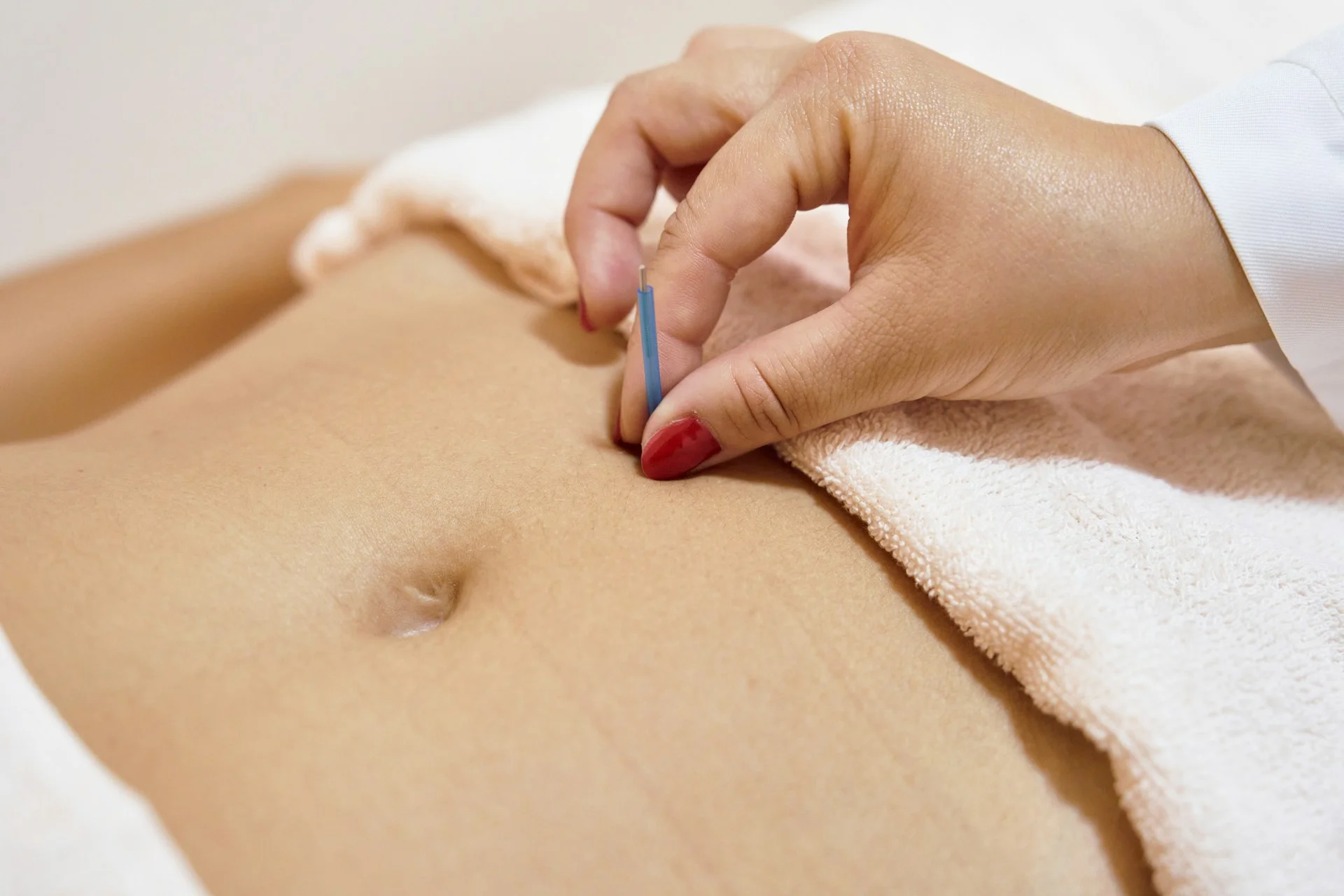
Acupuncture and Cupping for Pain Management
Acupuncture and cupping are particularly effective for pain management. Whether you’re dealing with chronic back pain, arthritis, or muscle tension, these therapies can provide significant relief. Dry needling vs acupuncture is another option for targeted pain relief, particularly for trigger points in the muscles.
Cupping for Stress and Anxiety
The cupping massage benefits for stress and anxiety are well-documented. By reducing cortisol levels and calming the nervous system, cupping helps manage stress-related conditions and promotes relaxation.
Benefits of Cupping for the Face
Benefits of cupping the face include improved circulation, reduced puffiness, and a more radiant complexion. Facial cupping is a gentle and effective way to enhance your skincare routine.
Understanding Cupping Marks and Their Meaning
The cupping colours meaning can vary, with darker marks indicating higher levels of stagnation. Understanding these marks can provide insights into your body’s condition and the effectiveness of the treatment.
Choose a Holistic Approach to Wellness
In conclusion, acupuncture and cupping are powerful therapies that can work together to promote healing and overall well-being. Whether you’re seeking relief from chronic pain, stress, or other health concerns, these ancient practices offer a holistic approach to wellness. At Red Leaf Wellness in Edmonton, our team of experienced practitioners is dedicated to providing safe and effective treatments tailored to your unique needs.
Contact us at Red Leaf Wellness to inquire about our acupuncture and cupping services and details on how these therapies can benefit your health journey.
Our Experienced Practitioners:
Dr.Ac Lalonde 🇬🇧
“As a clinician and leader, I see myself not only as a caregiver but also as a teacher—empowering patients with the knowledge and tools they need to take charge of their health. By educating and guiding them, I can help transform their lives far beyond the treatment room, creating lasting wellness that they can carry with them. – Dr. Tammy Lalonde”
Caring for people is my true passion and one of life’s greatest callings. With years of experience as both a Paramedic and Acupuncturist, I’ve supported patients through obvious and invisible injuries alike. I’ve been there during moments of deep crisis – delivering babies in cars parked roadside, providing care at 30,000 feet, or flying emergency medevacs over the Arabian desert. Through these experiences, I’ve learned not just how to care for people in urgent need but how lasting health is built over time through lifestyle, nutrition, and proactive care.
Over the years, my focus has shifted toward prevention – helping people earlier, before minor concerns turn into complex conditions. A big part of that work is my role in leading our Hormone Health program, where we help patients address hormonal imbalances that impact energy, mood, sleep, and overall quality of life.
To better support our patients and lead in this evolving area of care, I’ve earned certification as a Menopause Society Certified Practitioner (MSCP) – a designation held by only a select number of clinicians across Canada. This credential reflects a high level of expertise in evidence-based menopause and hormone health management. Combined with advanced training in Bio-Identical Hormone Replacement Therapy (BHRT) through Worldlink Medical, this dual focus allows me to guide our Hormone Health program with clinical depth, strategic vision, and a commitment to whole-person care.
My academic journey has allowed me to bridge Eastern and Western medicine into a truly holistic care model. I have a particular passion for working with individuals experiencing anxiety, depression, and PTSD, including those in the Armed Forces and Emergency Services. With a career spanning North America and the Middle East, I’ve served as a clinician, educator, and emergency medical dispatcher.
I hold active licensure and registration with the College of Acupuncturists of Alberta (CAA), the California Acupuncture Board, the Alberta Herbalists Association (AHA), and the National Certification Commission for Acupuncture and Oriental Medicine (NCCAOM). I’ve also served as a Board Director with the Alberta Pain Society and currently sit on the CAA Competence Committee.
Education:
- Doctorate of Acupuncture and Chinese Medicine (DACM), American College of Traditional Chinese Medicine
- Master of Science (MS) – Traditional Chinese Medicine, American College of Traditional Chinese Medicine
- Master of Science (MS) – Acupuncture and Oriental Medicine, cum laude, South Baylo University
- Bachelor of Science (BS) – Holistic Science, South Baylo University
- Diploma – Emergency Medical Technician (Paramedic), Augustana University
- Advanced Bioidentical Hormone Replacement Therapy (BHRT) Certified – Worldlink Medical

Licensure
- RAc – Registered Acupuncturist of the College of Acupuncturists of Alberta (CAA)
- RH – Registered Herbalist of the Alberta Herbalists Association (AHA)
- LAc – Licensed Acupuncturist of the California Acupuncture Board
- Dipl.Ac – Diplomate of Acupuncture of the National Certification Commission for Acupuncture and Oriental Medicine (NCCAOM)
- MSCP – Menopause Society Certified Practitioner
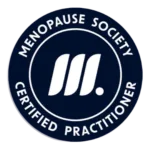

Dr.Ac Lalonde 🇬🇧
CEO, Acupuncture, Herbalism
“As a clinician and leader, I see myself not only...
Dr.Ac Masuda 🇬🇧 🇯🇵
Dr. Yoko Masuda is a master practitioner – skilled in the rare craft of Japanese style acupuncture – where she incorporates and tailors gentle needling, moxibustion (specific deep heat), therme (heat massage) and cupping into her acupuncture treatment plans. These skills, as well as her reputation for delivering tangible results, make her a sought-after provider, especially in the areas of pain management, sports injuries, orthopaedic injuries and emotional health. Yoko firmly believes that the mind and the body are intertwined in healing and she continually advocates for a healthy lifestyle alongside of the care she provides.
Yoko received her acupuncture degree in Japan and, after working at several clinics in Tokyo, she accepted a staff acupuncturist position with the world renowned Cirque du Soleil touring show. For nearly twenty years, she went on to travel the far reaches of the globe, working on several other productions, and earning the respect of an international group of artists, staff and athletes before eventually selecting Edmonton for her permanent clinical practice. As a former high school physical education teacher, and also as an alumnus of the Japanese national rhythmic gymnastics team (where she competed internationally on numerous occasions), she has amassed an impressive background in sports therapy and physical education, uniquely positioning her to address all manner of orthopedic and performance related concerns.
Outside of work, Yoko enjoys travelling, the outdoors, and spending time with her husband and two elementary-aged daughters.
Education:
- Diploma of Acupuncture, Hanada College, Tokyo, Japan
Licensure:
- RAc, College and Association of Acupuncturists of Alberta (CAA)
Fluency: 🇬🇧 – English | 🇯🇵 – Japanese

Dr.Ac Masuda 🇬🇧 🇯🇵
Acupuncture
Dr. Yoko Masuda is a master practitioner – skilled in...
Dr.Ac Winton 🇬🇧
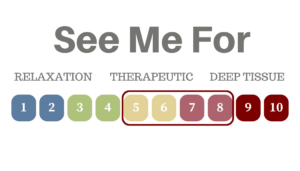 Helping people comes naturally to Michelle! As a highly skilled Acupuncturist, Massage Therapist, and Advanced Care Paramedic she is widely recognized for developing unique care plans which draw on her knowledge and therapeutic touch gained across each of these specialized disciplines. Having over twenty years of combined expertise in caring for her patients, Michelle has had a front row seat to observe how stress and emotion affect the mind and body. Complementing her acupuncture services at Red Leaf Wellness, Michelle offers a variety of therapeutic and relaxation massage therapies, including pregnancy massage, myofascial release and myofascial cupping.
Helping people comes naturally to Michelle! As a highly skilled Acupuncturist, Massage Therapist, and Advanced Care Paramedic she is widely recognized for developing unique care plans which draw on her knowledge and therapeutic touch gained across each of these specialized disciplines. Having over twenty years of combined expertise in caring for her patients, Michelle has had a front row seat to observe how stress and emotion affect the mind and body. Complementing her acupuncture services at Red Leaf Wellness, Michelle offers a variety of therapeutic and relaxation massage therapies, including pregnancy massage, myofascial release and myofascial cupping.
Michelle began her health career as a massage therapist, graduating the 2200hr Massage Program at Macewan University in 2001. Being active in competitive sport in her youth, Michelle understood the benefits of massage on sport performance, recovery and injury prevention. She subsequently branched into emergency care and became an Advanced Care Paramedic where she was able to offer a calming presence in stressful, emergent situations. Michelle has always believed that soft skills, an extra moment spent with family, or a hand to hold on the way to the hospital, can be as healing as the specific medical interventions themselves. Working as a Paramedic Michelle saw, and began to question, how it is that people differ in disease and the aging process and why the same drug benefited one person, but not the other. Her lifelong learning journey had her begin to look for these answers in the time-tested practice of Traditional Chinese Medicine (TCM) and Acupuncture, thus kicking off another quest for knowledge at MacEwan University’s Acupuncture Program.
Education:
- Diploma – Acupuncture, Macewan University
- Diploma – Emergency Medical Technician (Paramedic), Augustana University
- Honors standings
- Certificate – Massage Therapy Grant MacEwan College
Licensure:
- RAc, College of Acupuncturists of Alberta (CAA)
- RMT, National Health Practitioners of Canada (NHPC)
- ACP, Alberta College of Paramedics

Dr.Ac Winton 🇬🇧
Acupuncture, Massage
Helping people comes naturally to Michelle! As a highly skilled...
Dr.Ac Kossowan 🇬🇧 🇫🇷
Dr. Jason Kossowan is a dedicated and licensed Doctor of Acupuncture with the College of Acupuncturists of Alberta, and a distinguished graduate of the Acupuncture program at MacEwan University. Jason’s path to healthcare began with his passion for Chinese martial arts, especially tai chi, which he has practiced since 2005. His journey in martial arts led to a profound appreciation for Traditional Chinese Medicine (TCM) and a desire to integrate these classical techniques into solutions for modern health challenges.
Jason is particularly drawn to the treatment of cardiovascular and neurological conditions, as well as sports medicine, where he combines precision with a deep respect for the body’s natural healing processes. His approach is integrative and patient-centered, focusing on meaningful outcomes and a collaborative model of care that bridges Eastern and Western perspectives.
At Red Leaf Wellness, Jason is committed to creating a therapeutic experience that respects the body’s innate wisdom and adaptability. He actively engages patients through tailored treatment plans that address their unique needs, while also exploring the broader health benefits of TCM practices.
Outside the clinic, you can find Jason refining his tai chi practice or enjoying a board game—especially the cooperative ones that bring people together.
Education
- Diploma of Acupuncture, MacEwan University
Certifications/Licensure
- Registered Acupuncturist – College of Acupuncturists of Alberta (CAA)

Dr.Ac Kossowan 🇬🇧 🇫🇷
Acupuncture
Dr. Jason Kossowan is a dedicated and licensed Doctor of...
Dr. Ac Jin 🇬🇧 🇨🇳
Dan Jin, PhD, RAc is a skilled and compassionate Registered Acupuncturist who brings a unique blend of scientific expertise and holistic healing to her practice. Originally trained as a biomedical researcher, Dan holds a PhD in Biomedical Engineering from the University of Alberta, where her work focused on the genetic, chemical, and therapeutic potential of cannabis for neurological conditions.
Her journey to acupuncture began after experiencing its transformative effects firsthand. Inspired by its ability to relieve suffering and improve well-being, Dan made the courageous decision to change careers and pursue formal training in Traditional Chinese Medicine (TCM) and acupuncture. She is currently completing her final year of studies at MacEwan University, maintaining an outstanding academic record while gaining hands-on clinical experience treating pain, anxiety, insomnia, digestive concerns, and more.
Patients value Dan’s thoughtful, evidence-informed approach, as well as her deep respect for the body’s innate ability to heal. She is particularly passionate about helping people find relief from pain and stress-related conditions, drawing on both the ancient wisdom of TCM and her strong foundation in modern medical research.
At Red Leaf Wellness, Dan joins the team as an independent Registered Acupuncturist, offering treatments that align with our integrative, patient-centered philosophy. She looks forward to serving the community by helping patients achieve balance, reduce discomfort, and improve their quality of life through acupuncture and holistic care.

Dr. Ac Jin 🇬🇧 🇨🇳
Acupuncture (Associate)
Dan Jin, PhD, RAc is a skilled and compassionate Registered...


